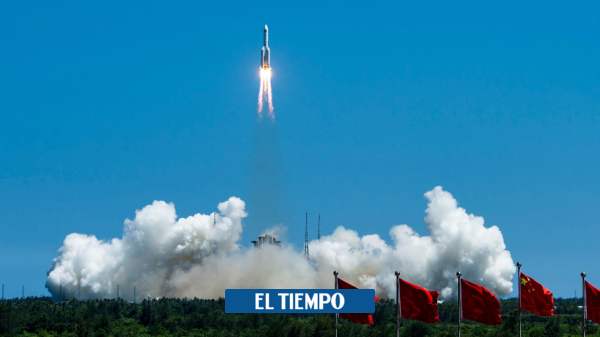An Asian soldier captured by Allied forces in Normandy during World War II. The person is believed to be Yang Kyung Jong. [PUBLIC DOMAIN]
In 2011, the South Korean film “My Way” told the story of a Korean who was captured by Allied forces during the Normandy landing during World War II.
The courier was wearing a German military uniform. Incredibly like the story, you can see many examples of how the history of a turbulent world has sent some Koreans off the peninsula. Some of them are related to Europe, especially Hungary, and I am happy to share them with my readers.
Born in the 8th century AD after the fall of the Gokurio dynasty (37 BC to 668 AD), which invaded Korea during the Tang Dynasty of China, General Jo Zion-ji was the first Korean known for his foreign mission. His father had been an officer in the Tang army since he was a former general of Gokurio.
Ko Zion-ji followed in his father’s footsteps and became a general in the Tang army. In 747, he led 10,000 cavalry throughout the Pamirs and into present-day Afghanistan and Pakistan. After the Go Zion-ji voyages against the Tibetan Empire, the influence of the enemy on the Indian subcontinent greatly diminished, depending on the regional states paying the taxes of the Tang Empire.
Soldiers of the Russian Tsarist army were captured by Austro-Hungarian forces during the First World War. Some of them were said to be of Korean descent. [HUNGARIAN EMBASSY]
From Siberia to the Nazis
Despite Ko Zion-ji’s military victory, the lives of the Koreans sent from the peninsula were not glorious. Little is known about the appearance of Korean soldiers on many battlefields in Europe during World War I and World War II.
Since the end of the 19th century, thousands of Koreans have migrated to the Russian Far East. They created Korean villages around the city of Vladivostok, obtained Russian citizenship, and many joined the Tsarist Russian army.
After the outbreak of World War I, many ethnic Korean soldiers fought on the battlefields of Eastern Europe. The Hungarian book “As Ifzuzak SA A Divorce” (Youth and World War), published in 1917, describes Koreans captured by Russian soldiers by the Austro-Hungarian army.
According to the book, this happened in Romania in the fall of 1916. This book contains a picture of Russian prisoners of war – some of whom are believed to be Koreans. Unfortunately, they have no clear information to cover up what happened next. During World War I, captured Russian soldiers were sent to distant agricultural and construction sites, which could also be used by Koreans.
The story of the return to the South Korean film “My Road” is based on facts. When Normandy landed in World War II, American paratroopers captured four Asian men in German uniforms. One of them is believed to be Japanese. However, according to detailed information, the soldier was a courier. His name was Yang Kyung Jong, who joined the Japanese army in 1938.
The following year, his unit was sent to the border between Mongolia and Manchuria, where the Soviet-Japanese military conflict took place. The incident became known as the Kalkin-Gul War, and Yang Kyung-jung is said to have been captured by Soviet forces.
He was sent to a labor camp somewhere in Siberia. However, after the outbreak of World War II, prisoners received Soviet uniforms and were sent to battlefields in Eastern Europe to fight the Nazi German army.
Yang Kyung Jong is believed to have been captured by the Germans somewhere in Ukraine in 1943 and then taken to occupied France with thousands of other Soviet prisoners of war at the time.
He was captured by Allied forces in June 1944 and later sent to a concentration camp in Britain. He is believed to have been released in 1947 and became an American citizen. In 2005, the South Korean television channel SBS aired a documentary about his wonderful life. However, the documentary concluded that there was no evidence that Yang Kyung Jong existed.
![Barry Farber, an American journalist who helped the freedom fighters during the 1956 Hungarian Revolution, and Zhang Ji-hong, a North Korean student. [HUNGARIAN EMBASSY]](https://koreajoongangdaily.joins.com/data/photo/2021/01/27/7651300b-2eb0-4c1d-8cad-c89a0774e771.jpg)
Barry Farber, an American journalist who helped the freedom fighters during the 1956 Hungarian Revolution, and Zhang Ji-hong, a North Korean student. [HUNGARIAN EMBASSY]
From North Korea to Budapest
A somewhat similar saga took place in the 1950s. Soon after the outbreak of the Korean War, a young North Korean student, Chang Ki-hong, joined the North Korean army. He and his colleagues received Soviet uniforms and guns.
They were sent to protect the beaches. In the late 1950s the UN. When the troops marched, his division was ordered to guard the top of the hill. As Zhang Ki-hong told me during our private meeting, a North Korean military officer in South Jiollah told them that if anyone advanced even a meter, they would shoot the soldier.
However, the UN When the tanks arrived, the young soldiers had no choice but to flee. Zhang Ki-hong was injured and taken to Manchuria for medical treatment.
In 1953, as an honorary soldier, the young man had the opportunity to study in one of the so-called sister states. State Hungary. When Zhang Ki-hong and his comrades came to Central Europe, they were amazed by the high quality of life of the people: for him, the North Korean students who came from hell on the battlefield were amazed by the signs of Neon Budapest.
They loved the famous Gellert Bath and the opera. They loved goulash and pancakes. Three years later, however, a major obstacle arose. In October 1956 the internal tension of Hungarian society led to the eruption of the anti-communist revolution. In the days of the Revolution, the people of Budapest fought against Soviet tanks in the streets.
Zhang Ki-hong used his experience on the Korean battlefield and taught his colleagues at the Hungarian University how to properly use Soviet weapons. Later, due to Soviet military repression, Zhang Ji-hong and three North Korean students fled Hungary to Austria.
Later, an American press report popularized Zhang Jihong. Barry Farber (1930-2020) of the American daily Greensboro visited Austria in December 1956.
According to the journalist, he saw a young Asian among the Hungarian refugees. Barry Farber thought he should be a Japanese reporter or employee of the Philippine Red Cross.
However, when he heard young Asians singing a song with Hungarians, the American journalist realized that Asians were also from Hungary. The reporter was surprised to hear that the young man was a North Korean and made several attempts to bring Jong to the United States.
The task is not easy because the US embassy does not understand the propaganda value of North Korean refugees.
Finally, on the first anniversary of the outbreak of the Hungarian Revolution, Zhang Ki-Hong arrived in the United States with the help of Barry Farber, and the two became lifelong friends.
Maintaining close ties with the Hungarian community in the United States, Zhang became a successful and wealthy architect in the United States. His story is a positive example of the expulsion of Koreans from their homeland by the turmoil of history.
Written by Hungarian Ambassador to Korea Moshe Xuma





